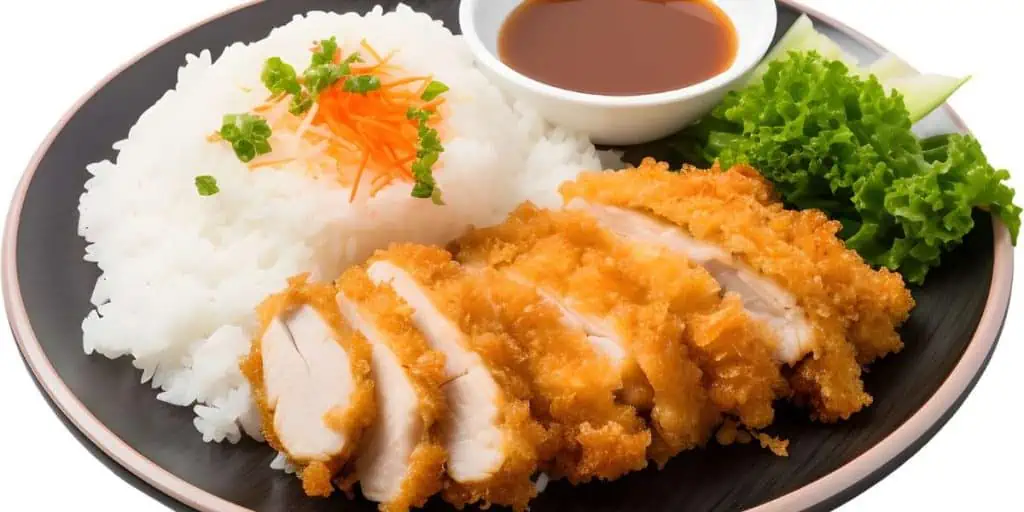Journey through the heart of Japan’s ancient capital, Kyoto, and uncover its rich history, breathtaking temples, and the art of traditional Japanese tea ceremonies.
Introduction
I stepped out of the train station into a sea of people, colorful umbrellas bobbing above the crowd. The rain pattered softly as I joined the human rivers flowing through Kyoto’s streets. Temple bells chimed in the distance. The sweet aroma of yatsuhashi wafted from a little bakery. Over 1,200 years after its founding as Japan’s capital, Kyoto still captivates with its timeless magic.
As a UNESCO World Heritage City, Kyoto offers a portal into old Japan. Here, you can wander through narrow alleys lined with teahouses and get lost among golden pavilions and tranquil Zen gardens. With over 2,000 temples and shrines, Kyoto contains a fabulous collection of Japanese religious architecture from across the centuries. It’s also the cradle of traditional arts, from the Japanese tea ceremony to paper-making and indigo dyeing.
In this ancient city, the modern mixes seamlessly with the old. Even as bullet trains whizz overhead, artisans still ply their trades in tiny workshops using skills honed over generations, keeping age-old traditions alive. From contemplative monks sweeping temple grounds to friendly grandmothers preparing traditional sweets, Kyoto’s residents embody the city’s spirit of grace and quiet dignity.
During my visit through Kyoto’s most spectacular temples, tranquil gardens, and hushed teahouses, I discovered the essence of old Japan – a reverence for beauty and nature, the artistry of the handmade, and the joy of the fleeting moment. Here are some of the highlights of my journey back through time.
Kyoto’s Architectural Gems: A Journey Through Time
Kyoto served as Japan’s capital for over 1,000 years and is home to over 2,000 religious sites. As emperors and aristocrats built their villas here, Kyoto attracted the very best Japanese artisans. The city grew into an unparalleled repository of exquisite architecture and priceless cultural artifacts.
While countless temples and shrines dot the city, here are some of Kyoto’s most iconic:
Kiyomizu-dera
Founded in 778 CE and perched on thick wooden pillars jutting out of the hillside, the “Pure Water Temple” takes its name from the cascade flowing beside it. Walk out onto the 13-meter high veranda for dazzling views of Kyoto. Don’t miss the three-storied Koyasu Pagoda and the main hall with its huge vermillion pillars.
Fushimi Inari-taisha
The mesmerizing sight of thousands of vermillion torii gates winding through the hills makes Fushimi Inari-taisha one of Kyoto’s most photographed spots. The shrine was dedicated to Inari, the god of rice and agriculture, by the Hata clan in the 8th century. A pathway leads up to the summit of Mt. Inari, taking around two hours. On the way up, admire the artistic details of the donate torii gates.
Kinkaku-ji
A shimmering vision rising above its reflecting pond, the Golden Pavilion is Kyoto’s most spectacular structure. Officially named Rokuon-ji, this Zen temple was converted into the glittering Kinkaku-ji or “Temple of the Golden Pavilion” in 1397. The reliquary hall’s façade is covered in gold leaf with a bronze phoenix on top. Captivating in any season or weather, it is mesmerizing when snow covers its grounds.
From early Shinto shrines to Zen Buddhist temples converted from aristocrats’ villas to monumental reconstructed buildings, Kyoto’s religious architecture will transport you through Japanese history. The intricate details embody traditional design aesthetics and artisanship.
The Timeless Tradition of Japanese Tea Ceremony
Beyond temples and shrines, Kyoto is also the fountainhead of Japan’s traditional arts, especially the ritualized art of serving matcha green tea known as chanoyu or sado. Brought from China by Zen Buddhist monks, the custom of drinking powdered green tea was picked up by Japan’s warrior class and eventually the imperial aristocrats.
By the 16th century, the serving and drinking of matcha had evolved into an almost sacred ritual in Kyoto’s high society. Codified by the tea master Sen no Rikyu, the practice became known as chado or “the way of tea”. Rikyu advocated wabi-cha, a pared down aesthetic ideal that guides all traditional Japanese arts. Wabi-cha embraces simplicity, humility, and the beauty of imperfection as an antidote to the vanity and extravagance of the age.
A traditional Japanese tea ceremony unfolds almost like a dance, with graceful moves practiced over years. Every gesture and item used has a specific philosophical meaning. While the intricacies take a lifetime to master, visitors can easily enjoy an authentic tea ceremony in a specialist teahouse.
Here are the main steps in a classic Japanese tea ritual:
| Step | Description |
|---|---|
| Purification | Guests wash their hands and mouths at a fountain to cleanse body and spirit |
| Waiting room | Guests gather to appreciate the calligraphy scroll or ikebana flower arrangement while the host prepares utensils |
| Tea house | Guests proceed to the tea room on their knees through a small door meant to humble all who enter |
| Food | Guests enjoy traditional Japanese sweets like wagashi before tea is served to moderate its bitter flavor |
| Utensils | The host carefully presents the ceramic bowl, whisk, and lacquered tray to appreciate their workmanship |
| Preparation | With graceful moves, the host uses a bamboo scoop to measure out the vivid green powdered tea |
| Serving | Bowing to each guest, the host carefully pours the frothy tea into waiting bowls |
| Drinking | Guests slowly turn the bowl twice to avoid drinking from its main design and drink the tea in three sips |
| Contemplation | Guests eat sweets afterwards to close the ritual and contemplate the wabi aesthetic they’ve experienced |
Through this intricate ceremony, participants find inner peace, respect cultural traditions, and form communal bonds. The preparation and drinking of matcha is an active meditation that connects past and present in each sip.
Kyoto’s Vibrant Artisanal Culture
Kyoto wasn’t just Japan’s imperial capital – it was also its cultural heart. Artisans flocked here to create priceless treasures for the aristocracy using skills perfected over centuries. Today, over 20% of Japan’s registered traditional craftsmen live in Kyoto.Their ateliers continue ancient arts like kimono-making, gold-leafing, paper-making, lacquerware, and doll-crafting. Visitors can tour specialized districts to shop for authentic crafts.
Nishijin Textile Center
Nishijin is Kyoto’s silk weaving district, creating exquisite brocades called Nishijin-ori that once graced the imperial court. At the Nishijin Textile Center, you can see weavers and embroidery artisans at work and even take silk-weaving and kimono dressing classes. Marvel at scintillating silk kimonos costing millions of yen before picking up some beautiful traditional souvenirs.
Kiyomizu-yaki Pottery
The area around the scenic Kiyomizu Temple has long produced Kiyomizu-yaki, Kyoto’s famous pottery glazed with translucent colors. Tiny family-run workshops line the cobbled lanes of Kiyomizu. Here, artisans shape clay on ancient wheels creating everything from teacups to sake bottles. Unique designs feature Kyoto’s seasonal flowers and maple leaves. This durable yet refined pottery steeped in tradition makes for wonderful souvenirs.
Fans, Umbrellas & Paper
Handcrafted Japanese fans, umbrellas, lanterns crafted from intricate washi paper are popular Kyoto souvenirs. At the Nishijin neighborhood, shops sell exquisitely painted hand fans imported from China exclusively for the Japanese imperial household. At Teramachi shopping district, pick up origami paper, calligraphy brushes, traditional umbrellas, and washi paper lanterns.
From fashioning metal and wood to dyeing fabric using ancient techniques, Kyoto’s talented artisans bridge the modern age to old Japan through their incredible craftsmanship honed over generations.
Kyoto’s Culinary Delights

As a culturally sophisticated city, Kyoto cuisine focuses on gracefully prepared vegetarian temple food, delicate kaiseki meals, and skillfully made traditional sweets. Restaurants range from centuries-old inns to formal ryotei and michelin-starred dining rooms, in addition to friendly neighborhood eateries.
Kyoto dining etiquette
- Remove shoes at traditional and high-end venues
- Arrive early or on-time for strict seating times
- Allow waitstaff to guide guests as per protocol
- Dress elegantly for upscale venues
- Order seasonal produce for the finest flavors
- Dine slowly to savor artistic presentations
- Converse in softer tones across intimate venues
Signature Dishes
- Tofu – Soy bean curd simmered in delicate broths or served cold
- Kaiseki – Exquisite multi-course seasonal meal with seafood and vegetables
- Yuba – Luxurious tofu skin served in hotpots or as refined sashimi
- Kyoyasai – Sweet heirloom Kyoto vegetables like tiny aubergines
- Saba zushi – Famous mackerel sushi said to have originated in Kyoto
- Matcha – Vivid green powdered tea as flavoring in desserts and noodles
- Yatsuhashi – Cinnamon flavors this crispy triangle sweet sold across Kyoto
Kyoto boasts the highest concentration of Michelin stars in Japan. Book well in advance to enjoy exquisite dining experiences. For casual elegant fare, try traditional restaurants in historic machiya townhouses near temples. Or pick up cheap yet refined shojin ryori (Buddhist temple vegetarian cuisine) at local shops. With such scrumptious and sublime cuisine, every meal in Kyoto promises to be a memorably artistic experience.
Sustainable Practices and Kyoto’s Green Heart
While dazzling as a historical and cultural treasure trove, Kyoto also leads Japan’s efforts towards sustainability. Home to the historic Kyoto Protocol aimed at reducing greenhouse gases, the city has spearheaded several green initiatives. ‘Mottainai’ or ‘waste not’ is central to Kyoto’s eco-conscious ethics rooted in Buddhist philosophy.
Public Transport
Instead of cars, residents heavily rely on buses, subway trains and trains, as well as bicycles. Kyoto city has an excellent public transport network that is reliable, regular, clean and safe. Bicycles lanes across downtown and outerlying areas also encourage cycling. Visitors can easily rent bikes and ride across temples or enjoy cherry blossoms while reducing their carbon footprint.
Reusable Tableware
Many Kyoto cafes and restaurants use reusable cutlery, plates, and cups instead of disposables to cut down on waste. Some places like Ninja Cafe have introduced edible cookie spoons to enjoy after a drink. Such small but significant habits driven by local businesses help preserve Kyoto’s environment.
Reduced Plastic Bottles
Kyoto’s advanced tap water filtration system provides clean drinking water, allowing many businesses to avoid plastic bottles. Temples and restaurants now offer purified water in reusable glass pitchers and tumblers for visitors. Additionally, the city has also completely banned all plastic bottles in municipal government meetings.
Green Tea Movement
The ‘Macha Movement’ advocates for the consumption of powdered green tea grown using ancient pesticide-free farming techniques unique to Kyoto. Temples, shops, cafes, and convenience stores across town serve this authentic stone-ground matcha harvested within the region for its freshness and quality assurance.
Kyoto’s lush green spaces are further reminders of its sustainable strategy. Sprawling forests once reserved for royal hunting spread across its outskirts. Beautiful parks and gardens carpet downtown, especially in spring when sakura or cherry blossoms perfume the air in pastel hues. Majestic bamboo groves and maples paint Kyoto crimson in fall. By infusing green practices with cultural advocacy for future generations, Japan’s ancient capital continues to lead by example.
Conclusion
From resplendent temples to minimalist tea rooms, Kyoto offers something for every sort of traveler – history buffs, nature lovers, foodies, culture vultures and more. Its immersive craft neighborhoods let you witness master artisans at work wielding skills passed down through centuries. Peaceful gardens, soothing Zen temples, and streaming sakura let you shed your worries as you walk in the footsteps of emperors and monks. And Kyoto’s people warmly welcome you into their daily rhythms, bridging the divide across time and culture.
As you sip matcha tea and listen to monks chanting in echoing halls, Kyoto’s essence will seep into your soul. You’ll soon find yourself slowing down, breathing deep, and rediscovering profound beauty in the smallest details – the crimson maples’ dance, the gentle swish of a temple broom, mossy stones underfoot polished by thousands of feet over the ages. Like the faint yet enduring scent of incense that permeates this atmospheric city, Kyoto’s charms will linger long after you leave.
So steep yourself in Kyoto’s culture, spirituality, and hospitality on your next Japan trip. Lose track of time wandering quiet lanes lined with machiya townhouses. Feast on artfully-plated kaiseki cuisine made from garden-fresh local produce. Watching an apprentice kimono-maker gracefully glide her shuttle across the loom. This timeless city rich in heritage can inspire the modern world about living with grace and cherishing our fleeting yet beautiful life.
Call to Action
Experience Kyoto’s unique magic and traditions yourself! Check out the official Kyoto Travel Guide for planning tips, maps, and the latest COVID-19 travel restrictions.
Have you visited Kyoto’s temples and shrines? What did you enjoy most? Share your trip in the comments and inspire other travelers! #VisitKyoto #DiscoverKyoto





